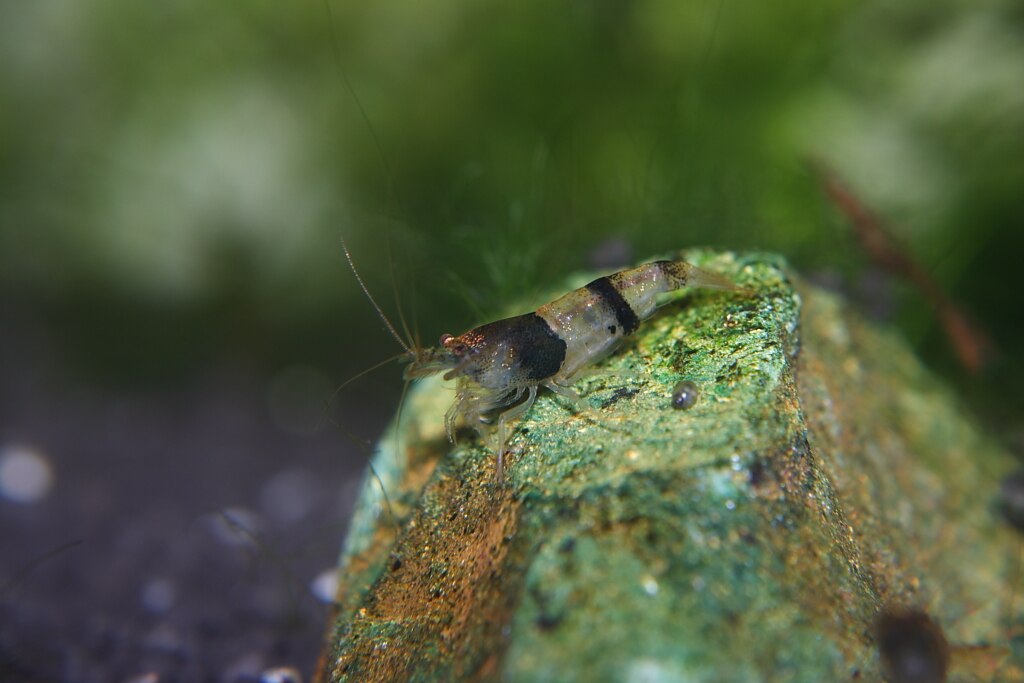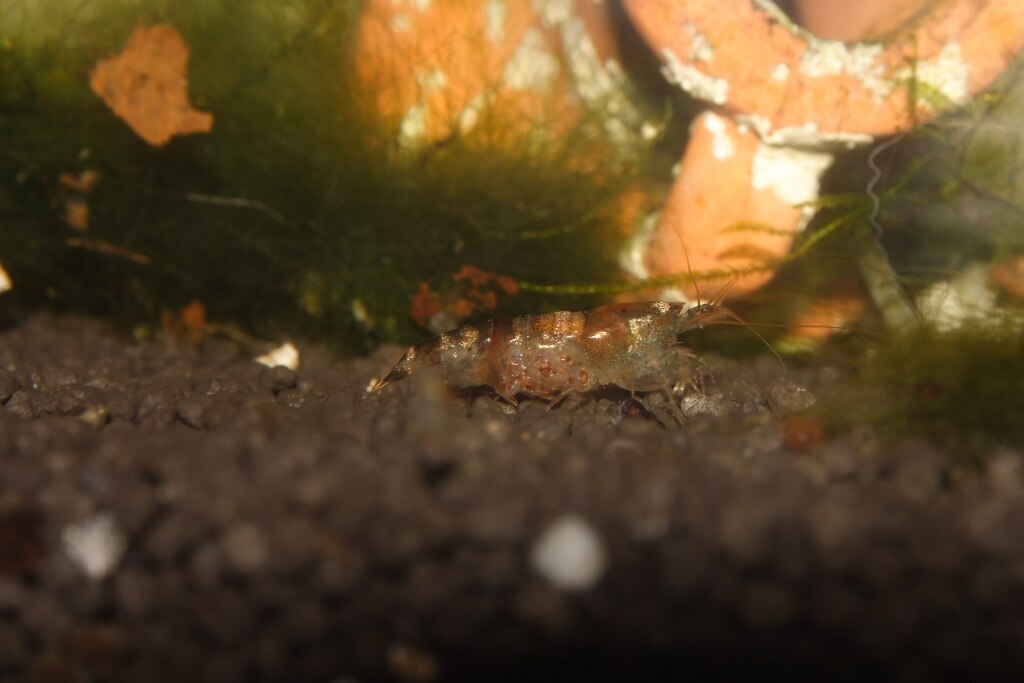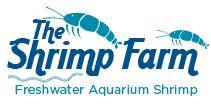Bumblebee shrimp (Caridina breviata) | Care & info
We've got a beautiful and unusual dwarf shrimp species for you today! Meet Caridina breviata, better known as the bumblebee shrimp. It's not difficult to see where this Chinese species, which was first described in 2000, got its name. It almost resembles a crystal black shrimp with those vertical black and white stripes.
Keep reading for everything you need to know about bumblebee shrimp care and how to keep this species in your home aquarium.
| Scientific name | Caridina breviata |
| Common name | Bumbleebee shrimp |
| Difficulty level | Intermediate |
| Origin | China (Guangdong) |
Table of Contents
Bumblebee shrimp appearance
This dwarf shrimp grows to a maximum size of around 1.2". It's characterized by its striped appearance, although the species' colors can vary.
Most are black or dark brown and transparent to white, but we've also seen red and white and specimens with more extensive speckling. You never know what you'll get with these guys!
Setting up a bumblebee shrimp aquarium
Requirements
Bumblebee shrimp aren't overly demanding when it comes to their home. An aquarium volume of at least 5-10 gallons is recommended. The aquarium should always be filtered (you can use a gentle sponge filter) and cycled to prevent toxic ammonia and nitrite. A heater is handy if the ambient temperature tends to be unstable.
Be sure to include some live aquarium plants and shrimp tubes so your bumblebees can feel safe and have plenty of surfaces to pick biofilm off. We like to use a black substrate for our shrimp, as it really makes their beautiful colors pop. Leaf litter and natural wood, like cholla wood, will also be much appreciated.
Water parameters
This species prefers the aquarium pH on the acidic side, between 6 and 7. The water column should be completely free of ammonia and nitrite through cycling, while nitrates should be kept low by doing weekly small water changes. Avoid copper-based medications, as dwarf shrimp are extremely sensitive to them.
We've gotten the impression that bumblebee shrimp can be somewhat sensitive to low water quality, especially when it comes to breeding. Keep the water clean at all times to prevent trouble and keep your shrimp happy and healthy!
pH: 6.0-7
Temperature: 62-76
Hardness: 4-6
Total Dissolved Solids: 100-200
Tankmates
Dwarf shrimp are small and fragile, meaning your options when it comes to tankmates are very limited. This especially applies to bumblebee shrimp, as they don't seem to breed all too quickly. Most fish species simply pick off too many baby shrimp, so choose microfish like dwarf Corydoras or consider opting for an invertebrate-only aquarium instead.
Caridina breviata interbreeds with other Caridina species like the popular Caridina cantonensis, so unless you're working on some kind of breeding project, don't keep them together. You can go for Neocaridina instead if you want to keep your bumblebees with other shrimp. Aquarium snails are also a great option.
Bumblebee shrimp diet
These shrimp are detrivores, which means they'll consume pretty much anything they find on the bottom of the aquarium. They naturally mainly feed off biofilm, but since this tends to be in short supply in our overly clean fish tanks, you should always supplement with a high-quality shrimp food.
Adding variety isn't too difficult with these unfussy eaters. You can offer blanched veggies like smashed peas, regular fish foods and algae tablets, frozen foods, nori (seaweed) sheets and plenty more. Indian almond leaves and alder cones make a great permanent food source, while other foods should be removed after a few hours to prevent them from fouling the water.
Breeding bumblebee shrimp
Although they appear to be slower breeders than some other dwarf shrimp species, you usually still shouldn't find it too difficult to expand your bumblebee shrimp colony. The females can be told apart by the males from their larger and more robust appearance.
After molting, the shrimp will mate and the female will move eggs from her saddle (behind the head) to the swimmerets (back legs). She'll keep them there for around 30 days, diligently fanning them, until they hatch into miniature shrimp. These babies don't need any extra care and get around fine on their own. All in all, a fun process to watch and one that doesn't require any extra work on your part!
Buying blue bumblebee shrimp
These are definitely not the most common dwarf shrimp in the hobby. Although they're quite readily available in Europe, you may have more trouble finding them in the US. Searching the internet or buying from fellow hobbyists should be good options.



 Shrimp
Shrimp Fish
Fish Crab &
Crab & Plants
Plants Foods
Foods Snails
Snails

